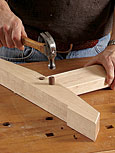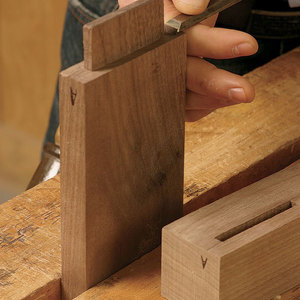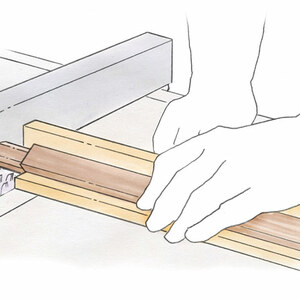Drawbored Mortise and Tenon
Make this tight-fitting joint even stronger by driving a peg through offset holes A drawbored mortise and tenon is one of the strongest variations of this ubiquitous joint. It gets the name because it is assembled by driving a hardwood peg through an offset hole in a mortise-and-tenon joint; as the peg engages with the offset hole, it draws the tenon deeper into the mortise.
A drawbored mortise and tenon is one of the strongest variations of this ubiquitous joint. It gets the name because it is assembled by driving a hardwood peg through an offset hole in a mortise-and-tenon joint; as the peg engages with the offset hole, it draws the tenon deeper into the mortise.
In this step-by-step video, Nashville woodworker and former Fine Woodworking editor Matthew Teague demonstrates how to prepare and assemble a drawbored mortise-and-tenon joint.
Photo: Thomas McKenna






















Comments
Well done. Thanks for the clear and concise instructional video. Wish I had used that technique on my last table for my Daughter in law's Tuscan Kitchen Table.
Nice piece. I think I would have used glue on the tenon faces also, not just on the pegs. That's where much of the strength comes from. Could then have used smaller diameter pegs, but the larger-than-life versions do add a design statement. Thanks for sharing!
Ely
Several things. 1) Clear and well done piece. 2) If you know the offset you will use set your first drill press fence with a shim piece of that thickness. 1/32nd off set, 1/32nd shim against the fence. Drill the mortise piece with the shim in place and the tenon pice without the shim. 3) Put the glue down in the hole, not on the dowel. This will virtually eliminate squeeze out. 4) The dowel is going to sound differently when it seats even if you don't use a metal hammer. :-)
Love your ideas, although I prefer to put the glue on the end of the dowel, as Michael did. This will spread the glue on the length of the dowel as the dowel is driven and it will prevent a puddle of glue at the bottom of the hole.
Log in or create an account to post a comment.
Sign up Log in